Text this colour links to Pages. Text this colour links to Family Trees. Place the mouse over images to see a larger image. Click on paintings to see the painter's Biography Page. Mouse over links for a preview. Move the mouse off the painting or link to close the popup.
Sappho is in Romans People.
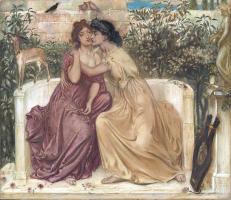
1857. Simeon Solomon (age 16). "Sappho and Erinna in a garden at Mytilene ".
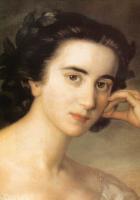
Around 1860. Soma Orlai Petrich (age 37). "Sappho".
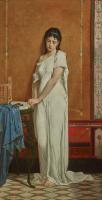
1875. Jean-Baptiste Bertrand (age 51). "Lesbie and the sparrow". The subject of our painting is both a praise of the favorite animal and a lamentation over its death, a common theme in antiquity. It can also bear an erotic significance, with the death of the sparrow, an animal whose melodious voice endowed it with a reputation for sensuality, symbolizing the end of a passionate love. Lesbia was the mistress of the poet Catullus (87-54 BC) to whom he dedicated many poems (half of the 118 that have survived). The wife of a consul, she was famous for her libertine ways and inspired the artists of her time. Catullus is said to have given her the nickname Lesbia in reference to the Greek poet Sappho, who lived on the island of Lesbos. Sappho ran a school for women there, where eroticism and poetry were taught.
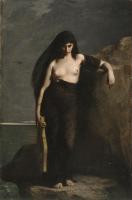
1877. Charles Mengin (age 23). "Sappho".
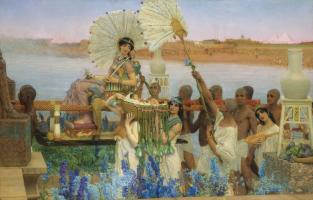
1881. Lawrence Alma-Tadema (age 44). "Sappho and Alcaeus". It depicts a concert in the late 7th century BC, with the poet Alcaeus of Mytilene playing the kithara. In the audience is fellow Lesbos poet Sappho, accompanied by several of her female friends. Sappho is paying close attention to the performance, resting her arm on a cushion which bears a laurel wreath, presumably intended for the performer. The painting is based on Athenaeus' "The Deipnosophists" Book 13 Chapter 7:
With the fond love of Lesbian Alcæus,
Who sang the praises of the amorous Sappho,
And grieved his Teian rival, breathing songs
Such as the nightingale would gladly imitate;
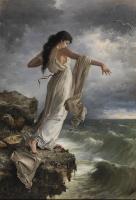
1881. Miquel Carbonell Selva (age 26). "The Death of Sappho". The painting depicts a myth about Sappho's death, that she fell off of a cliff and drowned to death after having her heart broken by a young sailor named Phaon.
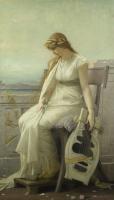
1884. Jules Joseph Lefebvre (age 47). "Sappho".
All About History Books
The Deeds of King Henry V, or in Latin Henrici Quinti, Angliæ Regis, Gesta, is a first-hand account of the Agincourt Campaign, and subsequent events to his death in 1422. The author of the first part was a Chaplain in King Henry's retinue who was present from King Henry's departure at Southampton in 1415, at the siege of Harfleur, the battle of Agincourt, and the celebrations on King Henry's return to London. The second part, by another writer, relates the events that took place including the negotiations at Troye, Henry's marriage and his death in 1422.
Available at Amazon as eBook or Paperback.
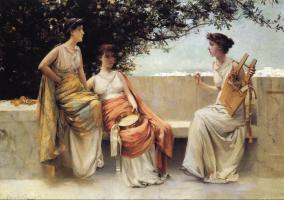
1895. Francis Coates Jones (age 37). "Sappho".

1904. John William Godward (age 42). "Sappho of Lesbos".
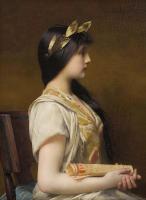
Before 1911. Jules Joseph Lefebvre (age 74). "Sappho".
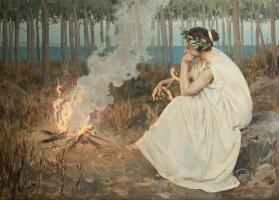
Before 1927. Enrique Simonet Lombardo (age 60). "Sappho".